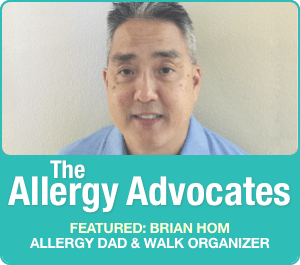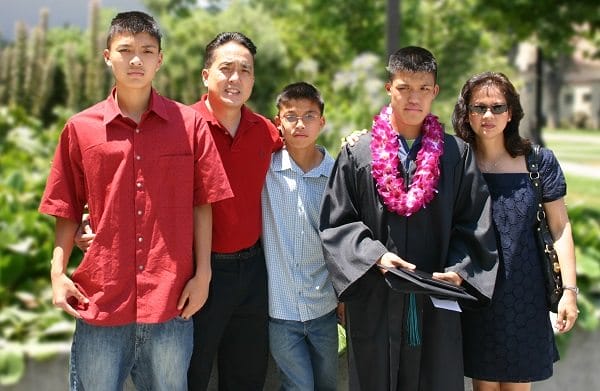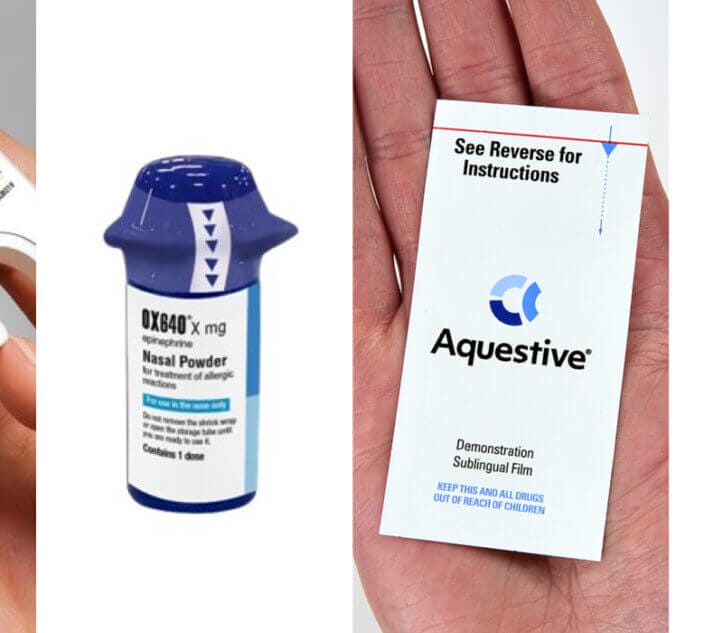
BJ died that night from an anaphylactic reaction after accidental exposure to peanuts that were in a dessert at the resort. The Hom family knew he was allergic and were avoiding peanuts, but they didn’t carry an epinephrine auto-injector. In the past, they had treated BJ’s reactions, which typically consisted of hives and swelling, with Benadryl.
Hom admits he was poorly informed about food allergies, and he now dedicates his life to educating others and creating a safer world for those with food allergies. He has been on Chinese-language television, done countless interviews with media, filmed a YouTube video called “Food Allergies Don’t Take Vacations”, and advocated for state and federal school epinephrine laws. Hom is also a member of the allergy organization FAACT’s board of directors.
In this installment of our Allergy Advocate series, Allergic Living honors Brian Hom for finding the courage to speak out about BJ’s death and for channeling his grief into actions that stand to benefit the millions of people with food allergies.
Senior contributor Claire Gagné speaks to Hom about FAACT’s upcoming California Bay Area Walk/Run for Food Allergies in memory of his son, working towards more peanut-aware professional sporting events, and what he adamantly wants others to know about food allergies.
Why have you dedicated so much of your time to advocacy since BJ’s death?
Brian Hom: I didn’t want to see any other family have to suffer what my family suffered. We watched our son die within a couple hours after landing for a celebratory vacation in Mexico. It’s the most tragic thing to watch your son die in front of your eyes.
Also, BJ’s younger brother, Steven, who was 13 years old at the time, also has peanut allergies. He broke out in hives that day at the resort, but didn’t go into anaphylaxis. So my advocacy also comes from the desire to keep my son alive.
Was it difficult to start speaking out?
BH: It was difficult, but it also helped me better understand food allergies. After the incident, I didn’t know how to channel all this anger and frustration I felt that something as simple as a peanut could actually kill my son.
I needed a way to constructively use what happened to help others. So it’s been helping me with the grieving process.
What kind of unique contribution does someone like yourself, who has lost a son to anaphylaxis, make to the advocacy for food allergies?
BH: I make it real. So many families out there don’t think a food allergy would ever kill them. Or people say it’s in your head, or that allergies just give you hives or an itchy throat.
I say: If your doctor hasn’t prescribed an epinephrine auto-injector, challenge the doctor. Say, “Why aren’t you giving it to me? I know of a story of a boy named BJ who died, and he went 18 years without having an anaphylactic reaction.”
 Brian Hom, second from left, with his family, including BJ, second from right, at his high school graduation.
Brian Hom, second from left, with his family, including BJ, second from right, at his high school graduation. The FAACT walk in honor of BJ is coming up on October 3. Tell us how that got started.
BH: I attended a FAAN walk in 2009 in San Francisco. I was looking for answers because I didn’t know a lot about food allergies at that time. I got involved, and in 2011, we moved the walk to San Jose.
The first year we raised $65,000, and then the second year we raised $75,000. The third year we raised $133,000, and then last year was around $65,000. So we’re close to half a million dollars overall. We’re expecting 3,000 attendees this year.
What is the day of the walk like for you?
BH: It’s a nice day, but it’s a difficult day. I’ve said it before while out on the walk: I wish my son could see the impact he’s making on all these people and how he’s been able to help me with my advocacy. I always talk about how it would be great for him to see that his life wasn’t lost in vain, but that it has made an impact and helped save lives.
Next: What the public, and the allergy community, must know





